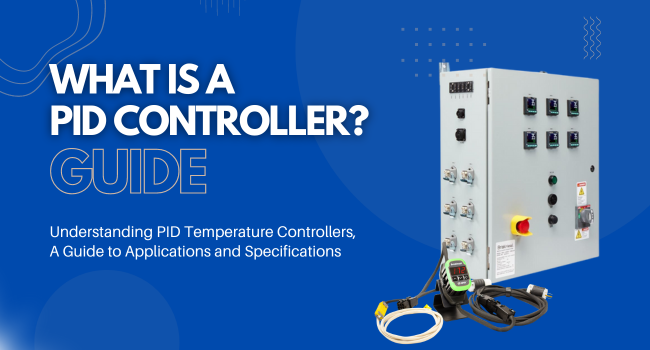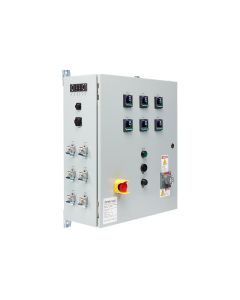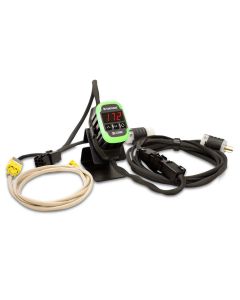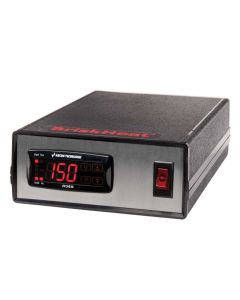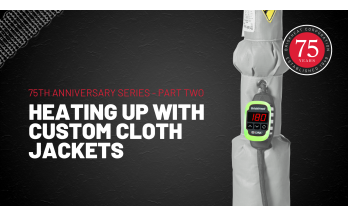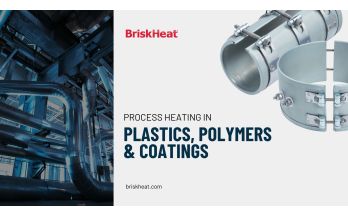What is a PID controller?
PID stands for Proportional, Integral and Derivative. These are the variables that work to maintain the correct temperatures in a process. Proportional is the actual variance in temperatures. Integral is the previous variance from the setpoint temperature. Derivative is the predicted future variance. Together, they are closed loop control system that uses temperature and the rate of change to control the temperature of the process more accurately.
In a previous Blog Post on BriskHeat.com, we explained the difference between ON/OFF and PID Temperature Controllers.
The analogy presented was that of boiling water. A temperature controller applies power to a heater that heats water until it starts to boil. An ON/OFF controller set to 212°F (100°C) would turn off power once the temperature is reached. The water stops boiling and cools to the point that the controller applies power once again. This ON/OFF cycle repeats itself over and over until the controller is powered off. If a PID controller is set to 212°F, power output to the heater is limited as the temperature approaches the set point. The controller adjusts every fraction of a second to maintain the boil.
A PID controller is less prone to overshoot the set point and less likely to cool to a point where the process might be affected. Any heating process that is temperature sensitive is most likely to require PID control. Sterilization of medical equipment, fluid heating to maintain body temperature or incubation are examples where a PID controller is recommended. Food or drug processing where the material being heated needs to be within a narrow temperature range is another example. In semiconductor manufacturing, tight temperature control is needed to produce high quality wafers. A highly accurate PID controller is one of the controlling factors.
What are some of the specifications used to compare temperature controllers?
The voltage must match the heater and the power rating or current should be 20% higher than the total of all heaters it will be controlling. It should also be suitable for the environmental conditions and rated for a temperature above that of the application. It will need to accommodate a temperature sensor that can be located at a suitable place to monitor and control the process. Alarm features such as deviation or absolute, visual or audible, should be consistent with the process needs.
Beyond these basics, the accuracy must allow for control to be within the limits of the process to be controlled. Accuracy can be stated as a degree value or a percentage of the full range of control. Other features to look for are ease of programming. BriskHeat PID controllers such as , and include Autotuning which allows the controller to learn your process from the feedback it receives. This adjusts the formulas for the loops for optimum control. But, our controllers also allow these variables to be manually entered.
| Product | Volt | Amps | Number of Zones | Application Temp | Indoor / Outdoor | Accuracy | Sensor |
| LYNX® | 120-277 | 7 per zone | 1 per module; up to 1028 per system |
0° to 1100°F (0°C to 593°C) |
Indoor |
Type-J: ± 1.09°C RTD: ± (0.25°C + 0.125%) |
Type-J, Type-K, PT100-RTD |
| MPC2 | 120-600 | Up to 60 per zone | No set limit | 32° to 1922°F (0°C to 1050°C) |
Both | ±0.2% of temp | Type-J, Type-K, PT100-RTD |
| SDX | 100-240 | 15 | 1 per controller | 0° to 999°F (0°C to 999°C) |
Indoor | ±0.5% full scale ±1 digit @ 25°C |
Type-J, Type-K, PT100-RTD |
Once you determine PID control is best for your process, look at the key differentiators.
For outdoor applications, the is the clear choice. When controlling multiple zones within the same area, determine if or the MPC2 is the correct solution based on voltage, amperage and set point temperatures. When heating pipe assemblies, LYNX heater connectivity provides a distinct advantage over the MPC2. For laboratory heating applications, an provides reliable control with the convenience of desktop mounting. BriskHeat has the account executives and application engineers to assist you with a heating solution tailored to your application.

